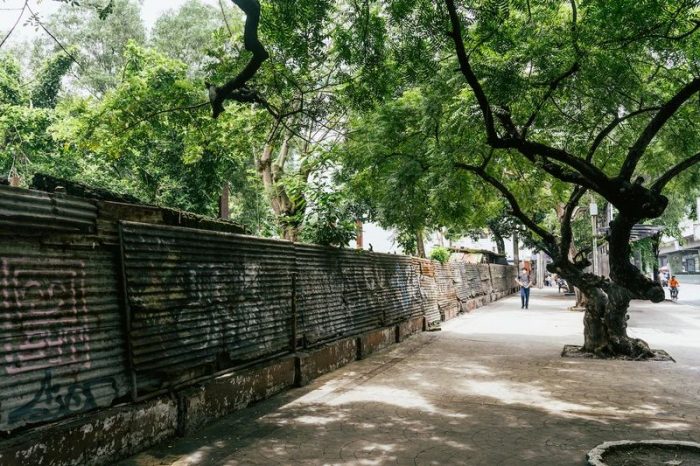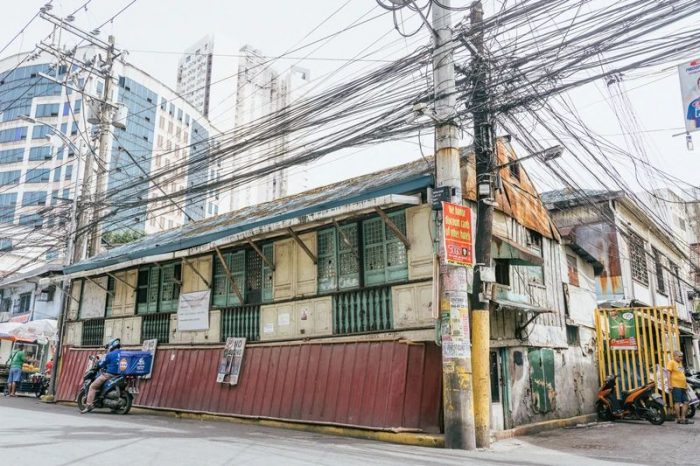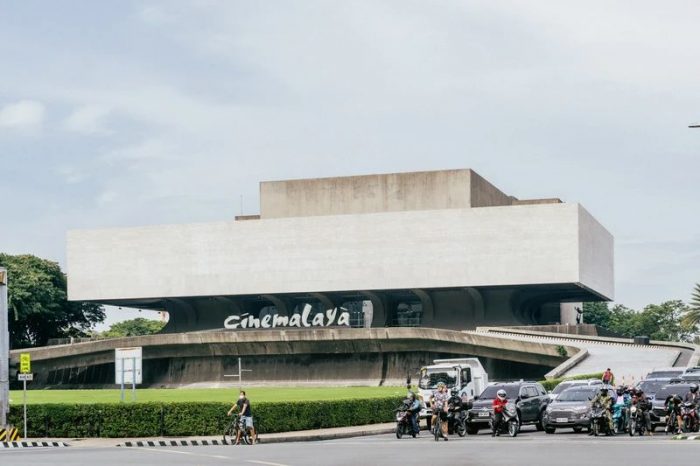The Manila Jai Alai Building in Ermita, Philippines, was and still is often described as an architectural masterpiece. Built in 1940, the four-story structure was considered one of the finest Art Deco buildings in Asia during its time, and hosted jai alai games and other pastimes of the rich and famous. It survived both the Japanese and American bombings of Manila, with its restaurants, theaters, and rooftop gardens later converted to air raid shelters, makeshift hospitals, and morgues—a testament to the strength of its construction.
In 2000, the building was razed by order of the Manila government to make room for the city’s new Hall of Justice. But those plans were abandoned and the Hall of Justice was never built. Now in the Jai Alai Building’s place is an empty lot fenced by rusting aluminum sheets.
This is not the only historic Philippine structure to have met its demise for naught. The Benguet Center in Mandaluyong City, which was designed by national artist Leandro Locsin and was inspired by the Banaue Rice Terraces, was demolished and replaced by a parking lot. Now, over its remains stands The Podium mall, yet another of many shopping centers in the area.
Heritage buildings—structures that have historical, architectural, cultural, or aesthetic value—not only display the country’s culture and tell stories of its past, but can also be repurposed to serve present-day needs. The Van Nelle Factory in Rotterdam, Netherlands, for example, is a concrete-and-glass icon of 20th-century industrial architecture. It was originally a factory for goods like coffee and tea, but is now an event location and office space.
Unfortunately, few private or public institutions in the Philippines today seem to understand the value in heritage buildings, with many seeing them almost literally as roadblocks to modern development. Instead of being preserved and repurposed, many of these buildings are neglected if not torn down.
“It’s frustrating to lose these heritage [buildings] one after the other, as they appear to belong to a time when local architecture was done with more thought, quality, and sensitivity to local context,” the team behind Brutalist Pilipinas, a visual database of brutalist architecture in the Philippines, told VICE.
“Today, when one looks around at the buildings that dot our CBD (Central Business Districts), such character and variety [have] been replaced by mostly similar-looking glass towers. There is a frustrating lack of regard for character, quality of space, and texture in today’s urban spaces, and the destruction of our modern built heritage all the more compounds this problem.”
“There is a frustrating lack of regard for character, quality of space, and texture in today’s urban spaces.”
The demolition of the Manila Jai Alai Building may have not given way to a Hall of Justice, but according to heritage architect Gerard Lico, it galvanized the heritage conservation movement in the country.
“This demolition was met with controversy and intense backlash from the community, culminating in the passage of the National Cultural Heritage Act in 2009,” said Lico.
Republic Act 10066, or the National Cultural Heritage Act, requires cities to document and identify cultural heritage properties, including both built or immovable heritage, like buildings, and movable heritage, like books and art. But having the law down on paper does not mean it’s implemented on-ground. And the law, on its own, is ultimately not enough to encourage the preservation of heritage structures.
This is partly because there’s little to encourage people to identify structures as heritage buildings at all, said Kelvin Tagnipez, an urban planner based in Manila. For building owners, the law simply adds red tape around what they can do with their buildings. Once a building is identified as a heritage structure, the government can suspend activities that they think could put its original design in danger. Authorities can also issue compulsory repair orders if the heritage sites are left unmaintained.
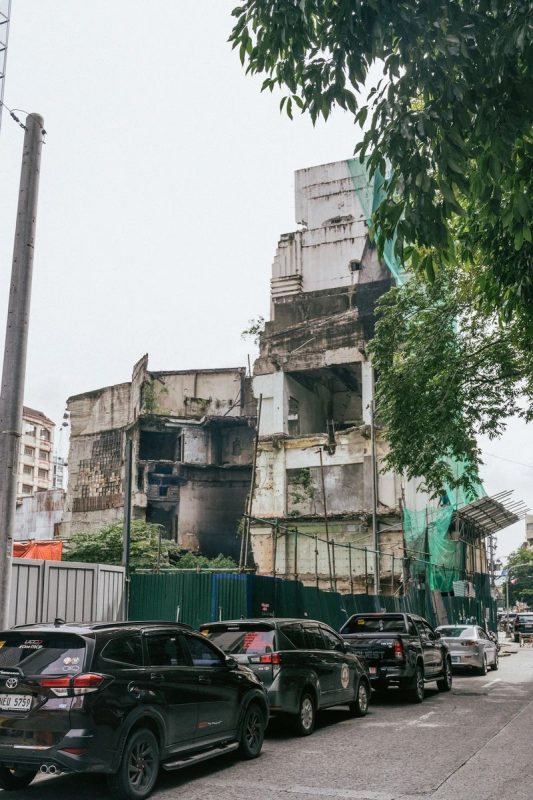
ONLY THE FACADE OF THE CAPITOL THEATER BY NATIONAL ARTIST JUAN NAKPIL REMAINS TODAY. PHOTO: JERIC RUSTIA
Preserving heritage structures also takes time and money. But right now, the only reason someone would want to register and preserve a heritage structure is their personal appreciation of built heritage, “which many Filipinos don’t have,” said Tagnipez. Unlike in Spain and the United Kingdom, where architectural sites generate profit, there’s quicker money to be made in the Philippines by demolishing old structures and building 40-floor housing or office buildings.
“There’s a lot of work to be done on coming up with a cohesive plan for heritage as a tourism draw or attraction for Metro Manila. There isn’t a clear appeal to visiting heritage sites in the Philippines. There isn’t also a framework for financial support for these buildings,” said Tagnipez.
Without these, heritage buildings will continue to go down to make room for newer and more immediately lucrative structures.
“Even with so much support and voices, market-driven decisions almost always win the day,” said Brutalist Pilipinas, referring to the growing concern for heritage architecture in the country, especially among young architects, and echoing Tagnipez on the real implications of finances when deciding what to do with these structures.
According to Brutalist Pilipinas, in order to get the public to care, they have to know why heritage buildings are important in the first place.
“The different types of architectural typologies tell a story of the evolution of the Philippines,” said Andie Villarosa, an architect also based in Manila. “The beauty of Manila is that you can be in Old Manila and see heritage houses from the Spanish period and drive down to Makati and see brutalist buildings. The buildings were placed in that specific location for a reason and its setting tells a story even without you knowing it.”
“The beauty of Manila is that you can be in Old Manila and see heritage houses from the Spanish period and drive down to Makati and see brutalist buildings.”
But it’s not just about a narrative. Preserving architecture is also about utility.
Villarosa studied in Spain, so she saw firsthand how old buildings can be transformed into both public and private spaces and used to satisfy present-day needs. In Spain, for example, an old monastery can be used as a warehouse or a co-working space.
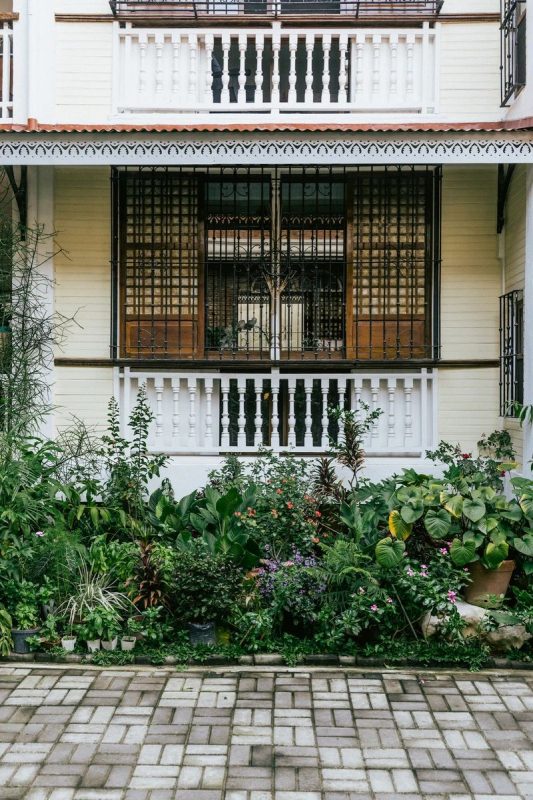
VILLA FLORO, IN SAN JUAN, WAS A PRIVATE HOUSE FROM THE 1920S THAT WAS RELOCATED TO ANOTHER PART OF ITS COMMUNITY AND REHABILITATED TO MEET 21ST CENTURY LIVING NEEDS. PHOTO: JERIC RUSTIA
“This is called ‘rehabilitation architecture.’ Architects don’t demolish the whole building, they work around the building. They change the interiors, tweak the facade a bit, but they do not remove the ‘essence’ of the building,” said Villarosa. “Sometimes you don’t need to start from scratch, you can respect the old building and give it a new purpose.”
Working with old structures to satisfy current needs may also meld the often conflicting worlds of real estate development and environmental sustainability. At a time when resources are scarce and pollution aplenty, Brutalist Pilipinas said the best thing architects can do for the environment is to not build at all. Many old buildings are still strong and able today. Their preservation, renovation, and repurposing holds at least part of the key in reducing the need for new construction.
“Such an approach addresses the issues of historical, cultural, and environmental preservation, and ensures that our heritage buildings still play an active, functional role in the community instead of being treated as relics or museum pieces,” said Brutalist Pilipinas.
“Sometimes you don’t need to start from scratch, you can respect the old building and give it a new purpose.”
There are bright spots in architectural conservation. Groups promoting heritage appreciation and preservation are gaining traction, especially among the youth, said Lico.
One recent conservation success story is that of the Rizal Memorial Coliseum in Malate. The art deco sports facility from the 1930s would have been demolished had it not been for the efforts of those who labored for its recognition as an important cultural property and historical landmark.
The coliseum later underwent a major rehabilitation funded by the national government and overseen by Lico, in time for 30th Southeast Asian Games in 2019. The structure was later used as a quarantine facility at the height of the COVID-19 pandemic, proving that old buildings can serve crucial roles in modern lives if only they’re allowed to do so.
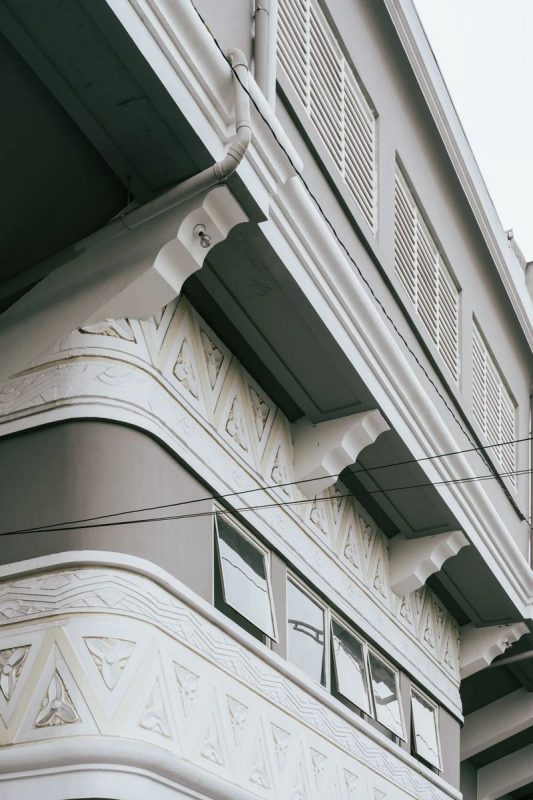
DETAILS OF THE RIZAL MEMORIAL COLISEUM, A BUILDING FROM THE 1930S WHICH WAS USED AS A QUARANTINE FACILITY IN THE COVID-19 PANDEMIC. PHOTO: JERIC RUSTIA
There are other heritage structures around Manila that still stand today, such as the First United Building, the Cultural Center of the Philippines’ Tanghalang Pambansa, and Villa Floro. But without action from the public, the government, and the private sector, these buildings are constantly in danger of neglect and demolition.
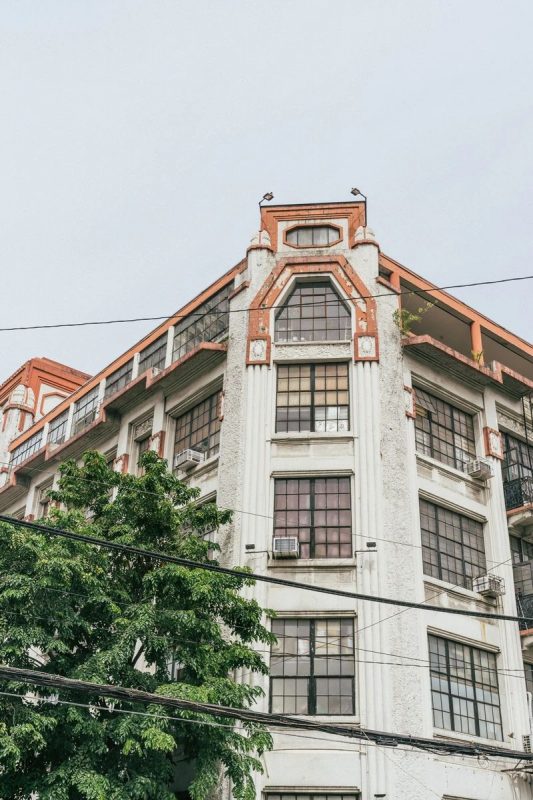
THE FIRST UNITED BUILDING IN ESCOLTA, ONE OF THE FEW STRUCTURES IN MANILA TO HAVE SURVIVED THE BOMBINGS OF WORLD WAR II. PHOTO: JERIC RUSTIA
Brutalist Pilipinas believes everyone should be responsible for the country’s built heritage, because it is our collective history in stone, after all.
“Old doesn’t mean passé, dead, or useless,” said Brutalist Pilipinas. “We want to help people see our heritage structures for what they are—signposts of how far we’ve come as a culture, landmarks that embody what we’ve learned, and finally, foundations that will help support whatever future there is to come. Heritage structures can and still should be allowed in as active players in present society.”


